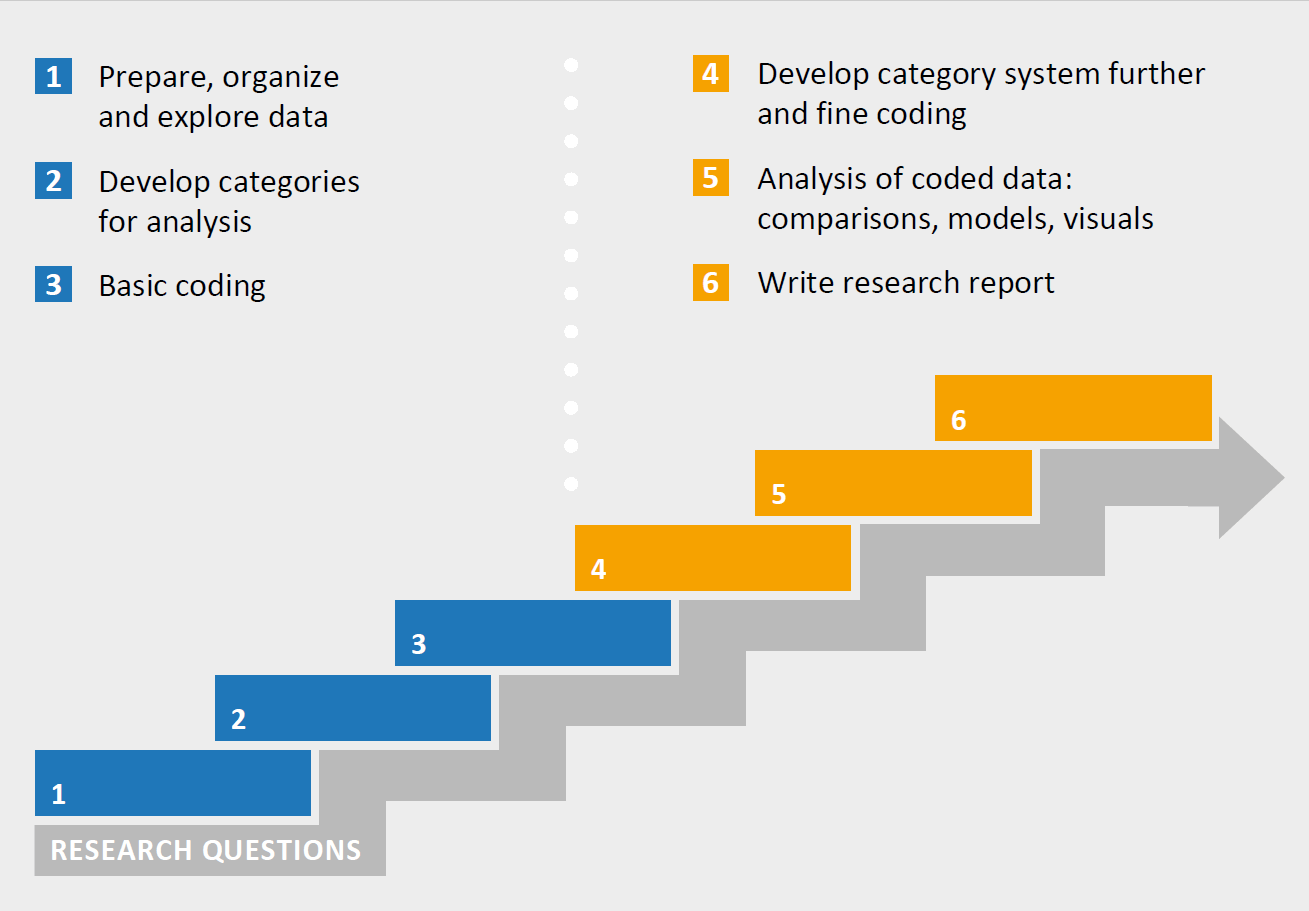Most qualitative interviews work with an interview guide that determines the topics of conversation in advance. For this kind of interview, we have developed an analysis method that we call focused analysis of qualitative interviews which we describe in detail in our new book (Rädiker & Kuckartz, 2020). In the book, you’ll find detailed recommendations on how to analyze interview data in a systematic and methodically controlled manner.
The procedure for focused interview analysis is described in six easy-to-follow steps. Within each step, you’ll find information about how to use MAXQDA.
Step 1: Prepare, organize, and explore your data
In the beginning, the data is prepared and then imported and organized in a MAXQDA project. You start your analysis by exploring the data, particularly by intensive reading of the interviews and writing initial memos and case summaries.
Step 2: Develop categories for your analysis
Here you develop your initial analysis categories using the interview guide as a starting point. Furthermore, you learn which criteria categories should fulfill.
Step 3: Code your interviews (“basic coding”)
In steps 3 and 4, the focus is on coding. We call the first coding cycle “basic coding” in which you apply broad codes to the interview transcripts.
Step 4: Develop your category system further and the second coding cycle (“fine coding”)
Now you continue the coding process and work on the category system. Category by category, the coded text segments are systematically processed: if necessary, sub-categories are created, and the data is “fine” coded in a second coding cycle.
Step 5: Analysis options after coding
This step addresses the question: How to proceed after coding? Here, we present several analysis options for the coded data available in MAXQDA, such as the visual tools or the tools for case and group comparisons.
Step 6: Write the research report and document the analysis process
In the final step, we give hints on how to write up your results and how to ensure transparency in documenting your analysis process.
The book is available on the MAXQDA Press website. An open-access version can be downloaded in PDF format for free.
At the end of each chapter, you’ll find a summary of the step, a checklist, and further readings.
About the Author
Dr. Stefan Rädiker has been involved in the computer-assisted analysis of qualitative data for many years and has written numerous publications on the qualitative and quantitative methods of social research. Within the framework of his company Methoden-Expertise.de, he trains, advises, and accompanies individuals and institutions in a wide variety of research and evaluation scenarios. After several years as Chief Technology Officer at VERBI Software, the producers of MAXQDA, he is still actively involved in the methodological development of MAXQDA.



